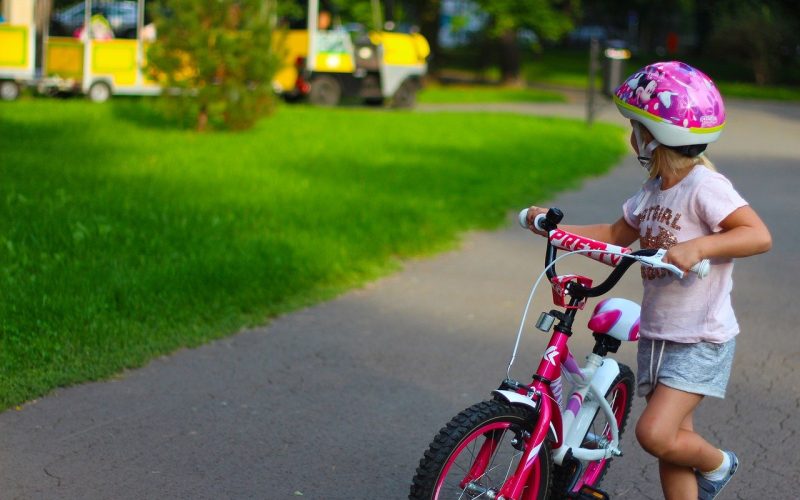According to a recent poll, nearly one in five parents say their child never wears a helmet when riding a bike. Although helmets aren’t mandatory for either parents or children in the UK, it’s highly recommended that everyone wears one.
Cycling incidents can lead to severe head injuries, but a good helmet can prevent that! With so many choices and things to consider, getting the helmet might be overwhelming.
This guide will help you find the right helmet for your child based on size, safety, and comfort.
What’s the right fit?
Determining if a helmet is the right fit for your child comes down to a few factors, including size, adjuster, strap, and doing a few tests. A helmet that corresponds perfectly to the head measurement will provide the best protection and be more convenient regarding weight and comfort. Here is what to consider.
The size
While adults’ helmets usually come in small, medium, and large sizes, kids’ bike helmets are measured by centimetres or inches. That’s why you will need to have the correct measurements on hand.
To measure your child’s head circumstance, wrap a fabric tape measure around your child’s head. The tape should be sitting around an inch above their eyebrows and shouldn’t be too tight.
The adjuster
Helmets usually come with adjustable dials to accommodate a range of circumferences. Make sure you adjust the dial until it fits perfectly so that the helmet doesn’t come off the head when you pull up on the top of it. There should be just a tiny space between the adjuster and the back of your child’s head, less than a finger distance.
The strap
There are two helmet straps to consider: the one around the ears and the chain strap.
The first one should form a V shape underneath the ears and shouldn’t be too loose or tight.
You should secure the chain strap when your child is trying out different helmets, so there is a few fingers space between the strap and your child’s shin.
The wobble test
Ask your child to gently shake the head in each direction without the chin strap to determine its fit. If it moves significantly, then it’s too loose. Tighten it, and if it still moves, then you need to try on a different helmet.
Boosting helmet safety
When choosing the best kids’ bike helmet, safety is the number one priority. The right size and adjustment can significantly help prevent injuries. But there are other features that can give your helmet an extra safety boost. Here is what to look out for.
Safety standards
Each country has different helmet safety standards, so you need to make sure that your kids’ bike helmet is compliant with at least some of them. They ensure that the helmet has undergone certain methods and meets specific safety requirements.
In the UK, Europe’s General Product Safety Regulations (GPSR) were adopted by the British Standards Institution (BSI) in 2005. It’s the most widespread helmet safety standard and is easily identifiable on the packaging.
Other helmet safety standards in the UK include Snell Memorial Foundation, the American Society for Testing and Materials (ASTM), and NEN’s NTA 8776.
Rotational management
We’re seeing smarter, better, and more efficient helmets designed to keep us safe, especially when it comes to our children. There are incredible helmet technologies that are revolutionising helmet safety. What differentiates them from traditional helmets is that they provide rotational impact protection through a low-friction layer that helps reduce rotational force to the head when falling under certain angles.
Multi-directional Impact Protection (MIPS) is the most widespread innovative protection technology used in helmets. In short, MIPS works by using a moving layer to prevent rotational impacts from passing onto your brain. It resembles a fall on ice, as the head continues sliding in the original direction.
WaveCel is another great rotational impact protection-based helmet technology that features a gel-like cellular structure and actively absorbs direct and rotational impacts through a three-step process of flex, crumple, and glide.
Yet another innovation in helmet safety, called KinetiCore, is known as the most lightweight helmet technology. Inspired by car crumple zones, it features individually controlled crumple zones that work together in synchronicity to cushion the head from rotational impact and absorb the energy. It’s also environmentally friendly, as the technology is in-built within the helmet’s core, meaning less waste is produced.
Cycling safety is critical for your children, and as a parent, it’s your job to ensure your children are protected. Alongside getting the right equipment, spend some time teaching your children how to be safe on the road while having the ultimate cycling experience.









